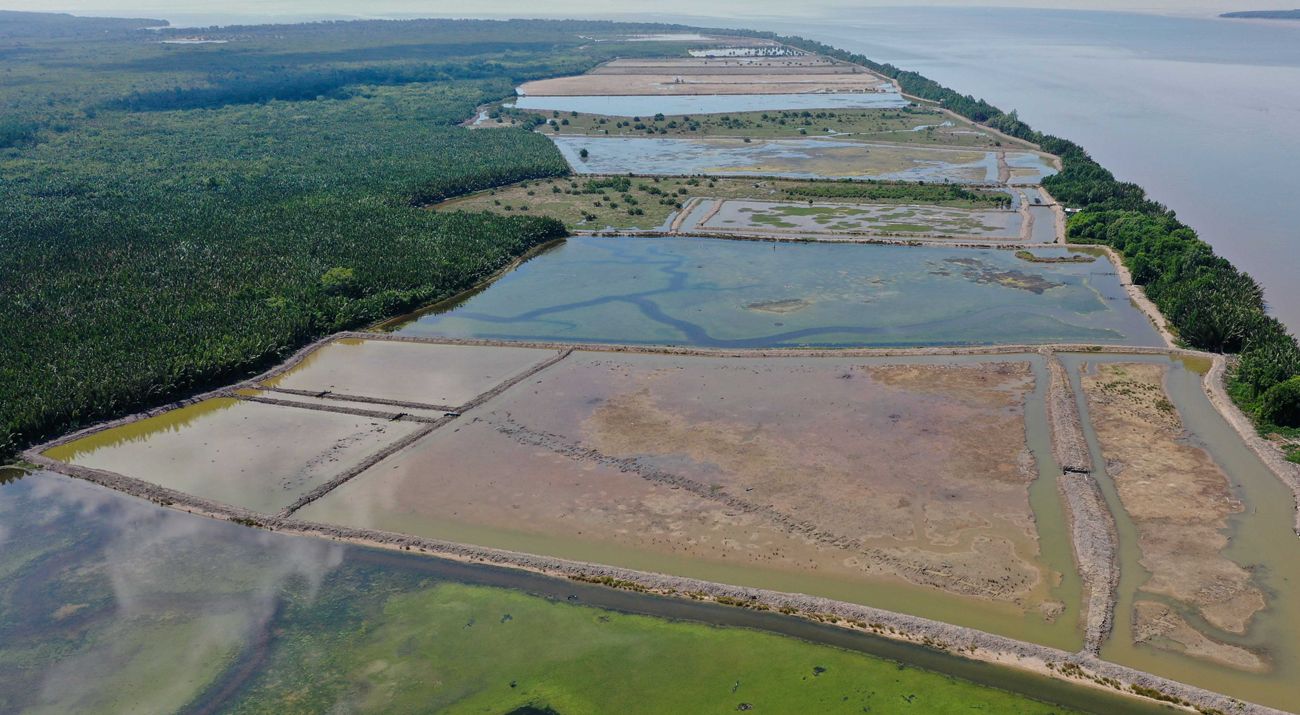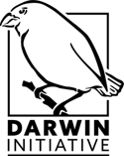What is SECURE?
Quote
Mangrove restoration through environmentally based management of traditional shrimp pond cultivation practices.
Target Program 2025
-

A successful SECURE pilot pond model covering an area of 100 hectares.
-

At least 50 of the 100 hectares of ponds will be restored to mangroves.
-

A maximum of 20 of the 100 hectares of shrimp is managed sustainably.
-

3 ponds successfully obtained IndoGAP certification and meets the international standards for sustainable cultivation practices.
-

The Berau Regency Government adopted the SECURE model to be implemented in Berau Regency.
Target 2030
-
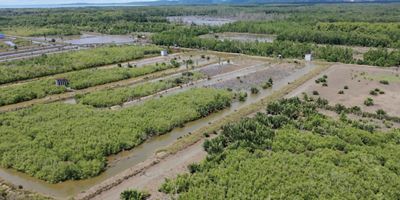
Aquaculture with an Ecosystem Approach (AAE) covering an area of 11,000 hectares has been implemented.
-
44,000 hectares of mangroves are protected sustainably.
-
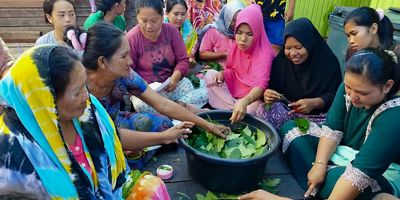
Welfare of 6 villages improve.
Achievement
-

5
5 villages in Berau Regency, East Kalimantan
-

228 Ha
A total of 228 hectares of shrimp ponds are managed.
-

22
22 Shrimp Ponds Implemented the SECURE approach
-

87 Ha
87 hectares of mangrove restored areas
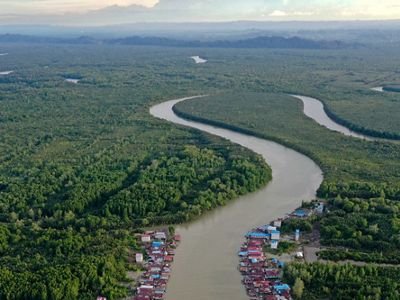
Background
Why Mangroves?
Mangroves are extraordinary tropical forests, growing on the border of land and sea, and have great ecological functions for both humans and the natural environment.
Mangroves make a major contribution to carbon storage which can be 3-5 times more than tropical rainforests.
Indonesia has the largest mengrove ecosystem in the world with an area of 3.3 million hectares (National Mangrove Map 2021). This area constitutes 23% of the world's total mangroves. However, Indonesia's mangroves are disappearing faster than tropical forests, at a rate of around 5,000-10,000 hectares per year.
Traditional Shrimp Pond Cultivation
Of the many factors, the practice of shrimp farming is the main contributor to the reduction of the global mangrove ecosystem. Most of the extensive shrimp farming with low productivity is converted from mangrove land.
Tiger prawns from the aquaculture sector are the fisheries commodity with the fastest growth rate. It has a global trade value that covers 15% of the total international fisheries trade value.
Therefore, Indonesia has set a target to increase export volume by 250% by 2024. This step can help the local and national economy.
This has encouraged many parties to look for various ways and strategies to minimize negative impacts, rather than simply prohibiting cultivation practices.
SECURE Strategy
Environment based Cultivation
One of the ways is through an environmentally based aquaculture approach, offering great opportunities to increase production and product quality, as well as enabling wider market penetration.
SECURE is an approach to increase coastal resilience by returning 50-80% of pond areas to natural mangroves. The remaining area can be used for cultivation activities with better and environmentally friendly cultivation management practices to increase production.
This effort is important because a healthy mangrove ecosystem supports fisheries productivity, provides a source of income, protection, and contributes to food and social security, as well as environmental preservation.
If coastal areas are managed in an integrated manner, a balance will be created between the welfare of cultivating communities and the conservation of mangrove ecosystems.
YKAN works together with partners to always support the government in the sustainable management of Indonesian waters including mangroves. Marine and coastal conservation efforts require collaboration from all parties through various media.
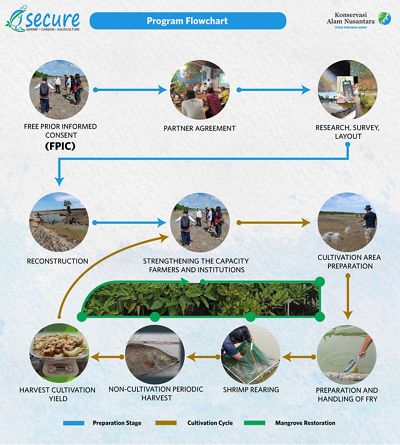
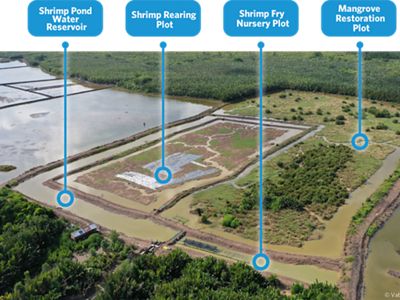
Generally, SECURE shrimp ponds is divided to two plots:
- Shrimp Rearing Plot functions as the main shrimp cultivation area Mangrove Restoration Plot which is a place for natural restoration of the mangrove ecosystem.
- Around the side of the plot there are caren which can be used as a place for cultivating milkfish.
In several SECURE Shrimp ponds, there is the Shrimp Fry Nursery Plot and Shrimp Pond Water Reservoir
Lokasi Tambak SECURE


